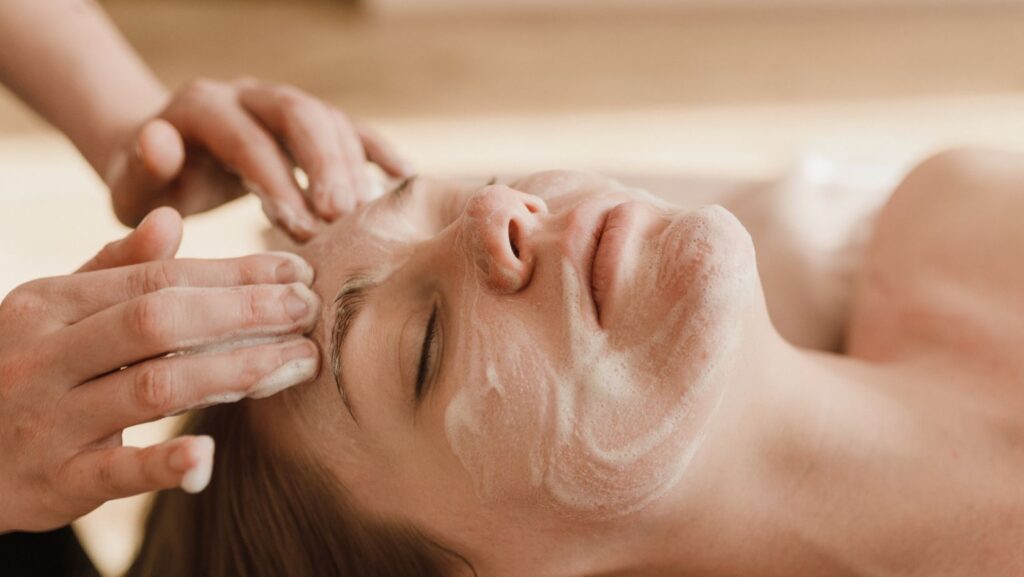
Many myths and misunderstandings surround deep tissue massage. Many people think that it is simply a “very strong massage” where the therapist exerts maximum pressure. In reality, deep tissue massage is a much more complex and thoughtful technique that works on the deep layers of muscle and connective tissue. Understanding what it really is will help you get the most out of it and avoid potential problems.
What is Deep Tissue Massage? Targeting the Source
Deep tissue massage — what is it really? It is a specialized massage technique that focuses on the deep layers of muscle tissue, fascia, and tendons. Unlike a relaxing massage, which works on the superficial muscles, deep tissue massage targets chronic tension and knots that form in the deepest structures of the body.
Imagine your muscles as a layer cake. The superficial layers are easily accessible and respond quickly to touch. But beneath them are deeper layers where chronic tension accumulates, adhesions form, and trigger points develop. This is where deep tissue massage comes in.
The technique uses slow, purposeful movements and deep pressure along the muscle fibers. The therapist works systematically, gradually penetrating through the surface layers to the deeper structures. It is not brute force — it is precision and understanding of anatomy.
The main characteristics of deep tissue massage include:
- Slow pace. The therapist takes their time, giving the tissues time to respond and relax under pressure.
- Specific pressure. Elbows, forearms, and knuckles are used to achieve the desired depth.
- Working along the fibers. Movements follow the direction of the muscle fibers, helping to break down adhesions.
- Focus on problem areas. Attention is paid to specific areas of chronic tension.
- Active participation of the client. You may be asked to breathe deeply or move certain parts of your body during the session.
This technique is especially effective for people with chronic pain, old injuries, or those who engage in intense physical activity. Interestingly, deep tissue massage works not only mechanically. When the therapist applies sustained pressure to the muscle, it stimulates receptors that send signals to the nervous system, and the muscle begins to release chronic tension.
Deep Tissue vs. Swedish Massage – A Matter of Depth and Goal
The question of deep tissue vs. Swedish massage often arises for people choosing their first professional massage. Although both techniques use similar movements, their goals and methods differ significantly.
Swedish massage is a classic massage therapy. It uses five basic movements: stroking, rubbing, kneading, tapping, and vibration. The goal of Swedish massage is general relaxation, improved blood circulation, and relief of superficial muscle tension.
Deep tissue massage is therapeutic in nature. It doesn’t just relax — it heals. If you’re looking for 청주 출장마사지 after a long flight, a Swedish massage will help you relax. But if you have chronic lower back pain from sitting all the time, a deep tissue massage will be more effective.
Let’s break down the key differences between deep tissue vs Swedish massage:
- Speed of movement. Swedish uses smooth, rhythmic movements; deep tissue works slowly and methodically.
- Level of pressure. Swedish varies from light to medium; deep tissue uses intense pressure.
- Areas of focus. Swedish covers the entire body evenly; deep tissue concentrates on problem areas.
- Purpose of the session. Swedish massage creates general relaxation, while deep tissue massage addresses specific problems.
- Tools used. Swedish massage works with the palms, while deep tissue uses the elbows and forearms.
The technique of working with tissues also differs. In Swedish massage, the therapist works with natural muscle relaxation through rhythmic movements. In deep tissue massage, the therapist actively breaks down adhesions in the fascia and stretches shortened muscle fibers.
Recovery time after sessions also differs. After a Swedish massage, you feel relaxed immediately. After a deep tissue massage, you may feel sore for a day or two, which is normal and indicates the healing process.

Does Deep Tissue Massage Hurt? The “Good Pain” Explained
One of the most common questions is: Does deep tissue massage hurt? The honest answer is yes, it can cause discomfort, but it should not be unbearable pain. Understanding the difference between “good” therapeutic pain and “bad” harmful pain is critical.
When a therapist works with the deep layers of muscle, you may experience what many describe as “pleasant pain.” It’s a feeling of intensity that makes you focus on your breathing, but doesn’t make you want to jump off the table.
Professionals use a scale of 1 to 10, where you should be in the 6-7 range. This is the therapeutic discomfort zone. If you feel 8 or above, it’s too much. If it’s 3-4, the pressure isn’t sufficient.
Does deep tissue massage hurt more in certain situations:
- First session. Your body is not yet familiar with this type of work.
- Areas of chronic tension. The longer the knot has been there, the more intense the sensation when it is released.
- Trigger points. These areas are hypersensitive and can send referred pain.
- After a long break. The tissues need time to get used to the stimulation.
- Dehydration. Lack of water makes the tissues less pliable and more painful.
“Good pain” feels like a release, as if something is “melting” under the therapist’s hands. You can breathe through it. After the pressure is removed, the area feels better and freer.
“Bad pain” is completely different. It is sharp, stinging, causing you to tense up and hold your breath. It makes you want to move away from the touch. If you feel this, tell the therapist immediately.
Remember that some soreness after a session is normal. It’s similar to muscle soreness after a workout. This post-massage soreness usually peaks in 24-48 hours and then disappears.
Benefits of Massage: The Rewards of Deep Work
The benefits of deep tissue massage go far beyond simple relaxation. Relief from chronic pain is the most obvious benefit. Deep tissue massage breaks down adhesions in muscles and connective tissue. These knots restrict blood flow and cause inflammation. When a therapist works to release them, the pain often decreases significantly.
Improved posture is another incredible result. Many people spend hours at their computers, which creates imbalances. Deep tissue massage can release tense muscles and allow the body to return to its natural alignment.
Reduced stress and anxiety are amazing effects. Studies show that deep tissue massage reduces cortisol levels and increases the production of oxytocin and serotonin. When physical tension is released, emotional tension often follows.
Benefits of deep tissue massage for athletes:
- Injury prevention. Regular work keeps muscles flexible and balanced.
- Improved performance. When your muscles are working optimally, you move more efficiently.
- Reduced recovery time. Helps the body recover more quickly from intense workouts.
- Increased range of motion. Releasing fascial restrictions allows for greater freedom.
Dangers of Deep Tissue Massage – When to Be Cautious
It is essential to understand the dangers of deep tissue massage and know when this technique may be inappropriate or harmful. Awareness of the risks helps you make safe decisions.
Excessive pressure is the most common problem. When a therapist works too intensely, it can lead to tissue damage. Microtrauma to muscle fibers, bruising, and inflammation result from excessive aggression. Therefore, if you feel pain, speak up!
Nerve damage can occur if the therapist applies deep pressure over nerve pathways. Symptoms include numbness, tingling, shooting pain, or weakness.
The dangers of deep tissue massage are serious in certain conditions:
- Deep vein thrombosis. Deep massage can dislodge a blood clot, which is potentially fatal.
- Osteoporosis. Bones are too fragile for intense pressure, which can lead to fractures.
- Cancer. Massage could theoretically promote the spread of cancer cells.
- Open wounds or infections. Risk of spreading infection.
- Recent surgery. Tissues are still healing and not ready for intense work.
- Pregnancy. Certain areas and techniques are contraindicated, especially in the first trimester.
Choosing a qualified therapist is critical to minimizing risks. Look for practitioners with proper certification, good reviews, and a willingness to discuss your medical conditions. A good therapist will conduct a thorough assessment before the first session and adapt the technique to your needs.
